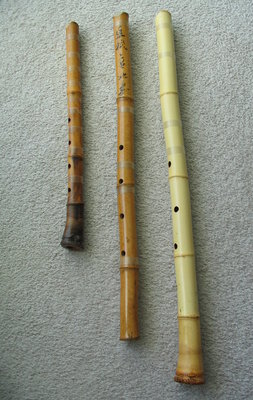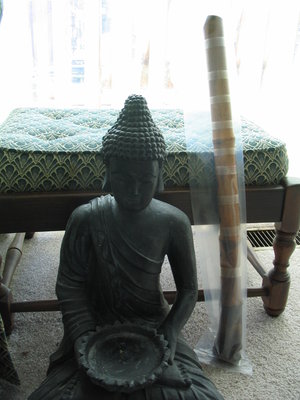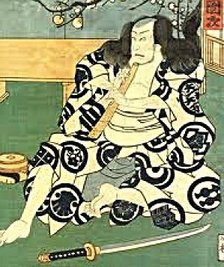Keep in mind that there are an abundance of shakuhachi available that, despite any merits they have, will NOT be suitable for lessons.
Click on the links below to expand the text and read about buying a shakuhachi.
-
A common question for many individuals when starting out on an instrument is what quality instrument will be needed as a student. The general rule with shakuhachi is the same as for most musical instruments, you should buy as much as your budget will allow for. Hopefully an instrument that you can grow into. An advanced student/professional instrument can cost upwards of $2000. While the brief description of a shakuhachi as an end blown bamboo flute with 5 finger holes does not at first seem to justify the price, be aware that not only does it require a large amount of work to get a piece of bamboo to play in tune with good response and tone through more than 2 octaves with all of the shakuhachi fingerings functioning properly, but selecting bamboo appropriate for making a shakuhachi is an art in itself.
-

Many shakuhachi teachers require a good 1.8 Jiari shakuhachi or possibly a lower-cost, alternative material shakuhachi in order to teach. The work involved in the bamboo jiari instruments sets the price fairly high. Fortunately, there is an inexpensive plastic shakuhachi called the Shakuhachi Yuu that replicates the characteristics of a good 1.8 Jiari shakuhachi well enough that many teachers recommend them to their beginner students. Another often recommended low-cost option is Monty Levenson's cast-bore student model shakuhachi. Monty Levenson has created a process that uses an alternative material instead of Ji, and uses Tiger bamboo instead of Japanese Madake bamboo for his student models.
While wooden shakuhachi aren't recommended by teachers for lessons as often, they are another low-cost alternative, and have tonal qualities more similar to a jiari shakuhachi than a jinashi shakuhachi. There are some Japanese manufacturers that mass-produce these. Or, there are a some individual wooden shakuhachi makers offering hand worked wooden instruments, often crafted from beautiful exotic timber.
-

This is where beginners frequently end up inadvertently becoming collectors. The simple nature of the construction of a jinashi shakuhachi can make them very affordable. While careful selection of bamboo and time-intensive workmanship in the hands of a talented maker can create a professional quality jinashi shakuhachi, it only requires minimal work to craft an instrument that will have the more obvious characteristics of a shakuhachi. While these minimally-worked shakuhachi make many a shakuhachi teacher's life difficult because they often do not fit the teacher's methods and are not up to the demands of serious study, most of them still have that unique relaxing tone that draws people to shakuhachi in the first place and many individuals enjoy them for meditative improvisations.
-
- Buying different length shakuhachi
Despite that the name Shakuhachi implies "1 foot and 8 tenths of a foot", which yields an instrument that has a Western D as it's lowest note, shakuhachi come in many sizes. For lessons, a 1.8 jiari shakuhachi is usually required. Beyond that, choosing a length is generally a matter of preference. Many people prefer the sound of longer jinashi instruments. I suggest keeping the length down to 2.5 or smaller, at least to begin with. Beginner shakuhachi players have enough challenges in front of them without the frustration of struggling to find a hand position that will enable them to cover the holes without causing a repetitive stress injury. Keep in mind when selecting a different length shakuhachi that the length of the instrument can not reliably be used to determine what pitch it will play because different bore profiles will significantly affect the pitch that a shakuhachi will sound.
-

Buying a used shakuhachi is very risky but can be rewarding. If the instrument in question is expensive, make sure you get an audition period that allows you enough time for your shakuhachi teacher to assess it. Remember, if you are a beginner it is going to take a long time to be able to assess the quality yourself. If the price of the shakuhachi is low enough that you don't mind the risk of making a mistake, be sure to ask as many questions as possible of the seller. Be aware that many older shakuhachi do not play in tune easily, this is often a disappoint even for individuals who enjoy playing simple improvised melodies. Also take note that part of normal maintenance for bamboo shakuhachi is to keep it stored in a plastic bag when not in use. This is particularly true of previously cracked and restored shakuhachi.
-
Two very good places to purchase shakuhachi are shakuhachi teachers and shakuhachi makers. Online auction sites are fun, and lower price shakuhachi in different states of repair and functionality can be found, but after a number of purchases one learns why high quality shakuhachi command high prices.

